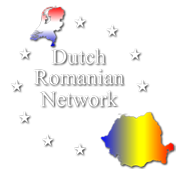Newsletter September – October 2021

DRN NEWS
Han in ‘t Veld – New board member Dutch Romanian Network
 The board has welcomed Han in ‘t Veld as a new board member. He has been known to the DRN for many years, which is no wonder because he can be counted among the Dutch pioneers (1998) in Romania. In the Romanian city of Craiova, where their first branch is located, it is now hoped to open their campus in the foreseeable future. They recently opened their second branch in Timisoara and further expansion is certainly not out of the question. The head office is in Breda with a sales office in Arnhem. His company Netrom is a prominent partner in the field of nearshore software development and an important outsourcing partner. In short, his knowledge and Romanian experience is an asset to the DRN and its members.
The board has welcomed Han in ‘t Veld as a new board member. He has been known to the DRN for many years, which is no wonder because he can be counted among the Dutch pioneers (1998) in Romania. In the Romanian city of Craiova, where their first branch is located, it is now hoped to open their campus in the foreseeable future. They recently opened their second branch in Timisoara and further expansion is certainly not out of the question. The head office is in Breda with a sales office in Arnhem. His company Netrom is a prominent partner in the field of nearshore software development and an important outsourcing partner. In short, his knowledge and Romanian experience is an asset to the DRN and its members.
Also see www.netrom.nl and www.stichtinggloed.nl
Safe the date – Information – Romanian Business Day
On Thursday 25 November the DRN will organize its annual Romanian Business Day. The program is being worked on and attention will certainly be paid 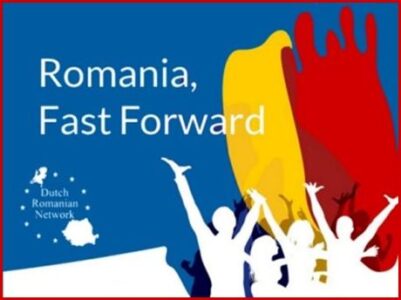
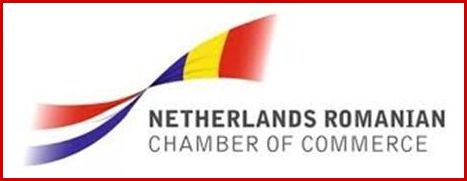 are given to the renewed cooperation between the DRN and the Romanian Netherlands Chamber of Commerce(NRCC) in Bucharest, which will benefit the members of both organizations. The European Mobility Package will also be discussed for the logistics sector, which is experienced as controversial in both countries, and many other matters such as the sizeable agri sector, which is also undergoing significant change in both countries. Of course, matters in the field of tax and related legislation and regulations will also be discussed. In the next newsletter we will discuss our plans (program, location and the like). To think about “Networking requires physical presence” provided the developments of Covid-19 allow it and the participants are vaccinated.
are given to the renewed cooperation between the DRN and the Romanian Netherlands Chamber of Commerce(NRCC) in Bucharest, which will benefit the members of both organizations. The European Mobility Package will also be discussed for the logistics sector, which is experienced as controversial in both countries, and many other matters such as the sizeable agri sector, which is also undergoing significant change in both countries. Of course, matters in the field of tax and related legislation and regulations will also be discussed. In the next newsletter we will discuss our plans (program, location and the like). To think about “Networking requires physical presence” provided the developments of Covid-19 allow it and the participants are vaccinated.
Embassy news
Good luck Cristian and Wijnand!

 The trade council Cristian Mateescu will leave the Romanian Embassy in The Hague in December due to the end of his term. His counterpart Wijnand Marchal will return to the Netherlands at the Dutch embassy in Bucharest. The DRN thanks both for their economic support. And we wish both a successful period in their new environment!
The trade council Cristian Mateescu will leave the Romanian Embassy in The Hague in December due to the end of his term. His counterpart Wijnand Marchal will return to the Netherlands at the Dutch embassy in Bucharest. The DRN thanks both for their economic support. And we wish both a successful period in their new environment!
Logistics and transport sector
KLG Europe Romania introduces the home delivery service Strongo
Strongo is the national courier service dedicated to the delivery of oversized products (large appliances, furniture, sanitary ware, building materials) to the end user. The new service benefits from KLG Europe Romania’s national network, which has 9 hubs strategically located in the country’s largest cities. Access to this infrastructure allows delivery in just 24-48 hours throughout Romania, including in hard-to-reach areas. Strongo customers will benefit from door-to-door deliveries, pick-up or cash account refunds, package opening on delivery, residual packaging collection, document returns and the option to offer the buy-back option to the final consumer.
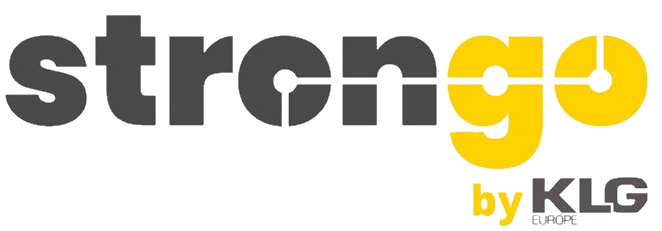
“Last year we saw that Romanians are increasingly willing to buy appliances, furniture, sanitary or tools online in addition to fashion, personal care or IT. That’s how the idea for Strongo was born: by using this service, companies with both physical and online stores can access a service that specializes in delivering unconventional and bulky products to the end consumer,” explains Daniel Radu, National Transport Director. .
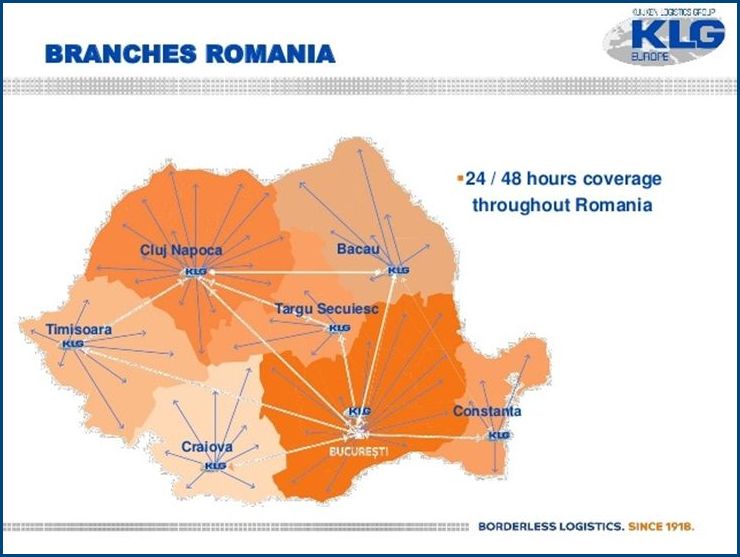
Due to the high degree of automation and digitization, Strongo offers customers the opportunity to quickly implement flows of goods and strategies for the future. In addition, through this service, Strongo’s customers can access a variety of logistics and road, sea and air transportation services through KLG Europe Romania. (The card above shows the 8 e KLG branch in Sibiu) In addition, every end user has direct access to full information about courier services, while customers can see real-time reports. “It is very important to build a relationship of trust with our customers, which is why we have prioritized the transparency of all processes and easy access to all the information they need. All this is possible thanks to the infrastructure provided by KLG Europe Romania, which allows us to offer integrated services through Strongo,” said Daniel Radu, National Transport Director. The unique internal distribution system with 24-48 hours coverage throughout Romania offers the advantage of access to the KLG Europe Romania network. The company wants to strengthen its position as market leader in the national distribution of B2B goods via the groupage system. For example, KLG Europe Romania offers daily routes to the regional hubs it covers throughout the country through two types of services: the 24-hour premium service and the 24-48h standard service.
ACEA Chief: As long as drivers in Poland or Romania have to search 200 km for a charging station, we cannot buy electric cars.
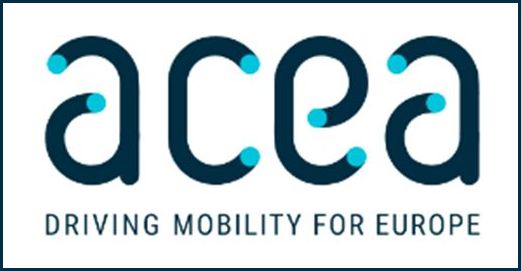 The ACEA chairman points out that “as long as drivers in Poland or Romania will have to travel 200 km to find a charger, we cannot expect to buy electric cars.”
The ACEA chairman points out that “as long as drivers in Poland or Romania will have to travel 200 km to find a charger, we cannot expect to buy electric cars.”
The opinion of the President of the Association of European Automobile Manufacturers (ACEA), the Dutchman Eric-Mark Huitema, is published in the context in which the European Commission launched this summer the proposal for a greening program “Fit for 55”, which requires that by 2030 CO2 emissions from cars by 55% compared to 2021 and even 100% by 2035.
“In practice, this -100% target would translate into an EU-wide ban on internal combustion engines (ICE). As an industry, we believe that all propulsion options have a role to play in the transition to climate neutrality, so the European Union should focus on innovation rather than banning or prescribing certain technologies,” said Eric-Mark Huitema.
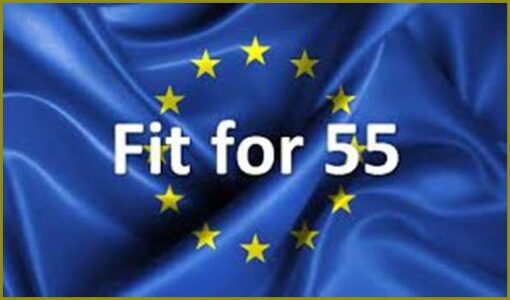 The official also points out that ACEA members are now investing billions of euros a year in innovative and sustainable propulsion technologies as they are committed to reducing emissions to zero. “However, the proposed 55% reduction target for 2030 is very challenging. I’m not worried about vehicle technology. In fact, I am confident that our members will play their part by making zero-emission vehicles available in all segments. But it is becoming very clear that the widespread use of zero-emission vehicles will only happen if the proposed CO2 reductions are accompanied by equally ambitious targets for EU Member States to build charging points for electricity and hydrogen.
The official also points out that ACEA members are now investing billions of euros a year in innovative and sustainable propulsion technologies as they are committed to reducing emissions to zero. “However, the proposed 55% reduction target for 2030 is very challenging. I’m not worried about vehicle technology. In fact, I am confident that our members will play their part by making zero-emission vehicles available in all segments. But it is becoming very clear that the widespread use of zero-emission vehicles will only happen if the proposed CO2 reductions are accompanied by equally ambitious targets for EU Member States to build charging points for electricity and hydrogen.
In this context, the “Fit for 55” proposal does not seem feasible. Previous estimates, even by experts from the European Commission, indicated that a 50% reduction in CO2 emissions by 2030 would require around six million public chargers for electric vehicles, but when it presented the proposal in July, the EC made no commitment. to make these charging stations. He only mentioned that he estimates the installation of 3.5 million charging points by 2030. Therefore, while strict values are imposed on manufacturers, only estimates are discussed for the necessary infrastructure.
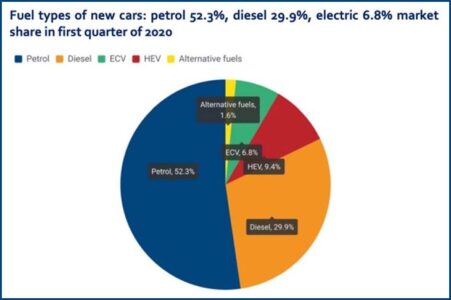 To demonstrate how unclear the “Fit for 55″ program is for charging stations for electric and hydrogen cars, ACEA has conducted its own market research. As a result, as you have already learned on our website, 70% of EU chargers are now concentrated in just three countries: the Netherlands (66,665), France (45,751) and Germany (44,538). Together these countries represent only 23% of the total area of the Union, the remaining 30% of the charging infrastructure is therefore spread over 77% of the EU territory.
To demonstrate how unclear the “Fit for 55″ program is for charging stations for electric and hydrogen cars, ACEA has conducted its own market research. As a result, as you have already learned on our website, 70% of EU chargers are now concentrated in just three countries: the Netherlands (66,665), France (45,751) and Germany (44,538). Together these countries represent only 23% of the total area of the Union, the remaining 30% of the charging infrastructure is therefore spread over 77% of the EU territory.
“What worries me most is that this charging infrastructure location has two different plans and is developing along the dividing lines between the richer EU countries in Western Europe and the countries with gross domestic product (GDP). lower per capita in Eastern, Central and Southern Europe. Large EU countries, with significant areas but with lower GDP, such as Poland, Spain or Romania, seem to be lagging behind. (…)
Electric car sales are directly related to a country’s standard of living. This means that access to plug-in vehicles (ECVs) remains a major problem for many Europeans. While electric cars and plug-in hybrid cars accounted for more than 10% of total sales in the EU last year, there are ten Member States with an ECV share of less than 3% in 2020”.
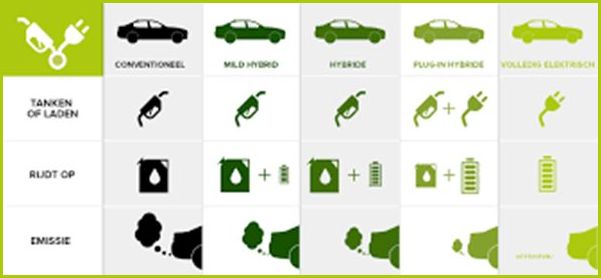 ACEA studies show that countries with an electric car market share below 3% have an average GDP per capita of less than €17,000. This is the case, for example, in the EU Member States in Central and Eastern Europe, but also in Greece. In contrast, an ECV share of more than 15% can only be found in the richest countries in Northern Europe with a GDP of more than 46,000 euros.
ACEA studies show that countries with an electric car market share below 3% have an average GDP per capita of less than €17,000. This is the case, for example, in the EU Member States in Central and Eastern Europe, but also in Greece. In contrast, an ECV share of more than 15% can only be found in the richest countries in Northern Europe with a GDP of more than 46,000 euros.
Plug-in hybrid electric vehicles (HEV) dominate the alternative motor vehicle market in most EU countries, with 15 countries having a HEV share of more than 10%. For many people, vehicles that combine an internal combustion engine (ICE) with a battery-powered electric motor are a perfect fit. In particular, these are countries where charging points are lacking or battery-powered electric cars are still too expensive for the current income of the population.
But according to Huitema, hybrid cars (HEVs) “play an important role in the transition to climate neutrality. But what will happen to these cars if the EC plans to completely ban ICE after 2035?”
Limited charging infrastructure in Romania
The ACEA president continues his reasoning and also shows that, in addition to purchasing power, citizens of some EU countries are dissuaded from buying electric cars and the problem of their charging infrastructure. miles or more to find a charging station, we can’t expect them to buy a 100% electric car, regardless of “Brussels” intentions.ACEA recently discovered that there is a serious lack of charging points for electric cars if we look at the road network of EU Member States. Ten countries do not have a single charging point for every 100 kilometers of major roads. And it should come as no surprise that those countries (with the exception of Hungary) also have a market share of electric cars of less than 3%. are only four Member States that have more than 10 chargers per 100 km,” said the ACEA President.
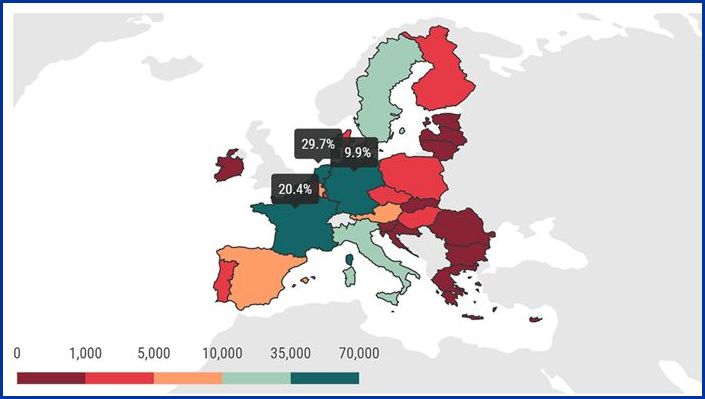
He even gave his native Netherlands as an example, which has about 47.5 charging stations per 100 km. The contrast with a vast country, eight times larger than Poland, is enormous. In this state, there is now only one charging point for every 250 km of road.
With the presented studies and concrete cases, Eric-Mark Huitema wanted to show that the European Commission’s proposal on charging infrastructure for alternative fuels (AFIR), as part of “Fit for 55″, cannot achieve its goal! We welcome the idea of mandatory charging and refueling targets in each of the 27 EU Member States, but the AFIR proposal is not fully in line with the Commission’s ambitious CO2 targets.”
In conclusion, the head of the association that groups all the major car companies shows that “the great danger is that the progress made in several rich countries in Western Europe distracts political decision-makers in Brussels from the precarious state of the charging network in other EU countries.” countries and the fact that access to individual mobility is coming under increasing pressure for many Europeans”.
Protests by Romanian transport companies against government
TIR drivers (TIR is International Road Transport) took to the streets with dozens of trucks in Victoriei Square in Bucharest. Tens trucks belonging to three road haulage employers’ associations recently lined up in Victoriei Square, during a protest rally by hauliers against government policy to tax the per diem allowance of freight drivers, as well as insurance prices for compulsory car and quarantine drivers. The event was attended by drivers and trucks from transport companies affiliated to the National Union of Road Transporters of Romania (UNTRR), the Federation of Romanian Transport Operators (FORT) and the Association of Freight Transporters of Bucovina. Trucks from more than 20 provinces attended the protest. Most signs on the trucks are marked with the message “Retroactive daytime tax = death of road transport”. Road traffic in Victoriei Square took place under normal conditions, the protesters’ trucks were parked in the central alveola. According to UNTRR, carriers are, among other things, dissatisfied with the government’s policy to tax the daily allowance of freight drivers, arguing that the bill maintains the risk of relocation based on the findings of the Labor Inspectorate, with a significant negative effect on the competitiveness of Romanian airlines in the country. the EU, already hard hit by the new provisions of European legislation as a result of the mobility package . In the view of the carriers, it is not clear whether the project will replace the daily allowance for external travel for all areas of activity and how this will affect the daily allowance for the national ones. “If today the daily allowance is conceptually both national
trucks belonging to three road haulage employers’ associations recently lined up in Victoriei Square, during a protest rally by hauliers against government policy to tax the per diem allowance of freight drivers, as well as insurance prices for compulsory car and quarantine drivers. The event was attended by drivers and trucks from transport companies affiliated to the National Union of Road Transporters of Romania (UNTRR), the Federation of Romanian Transport Operators (FORT) and the Association of Freight Transporters of Bucovina. Trucks from more than 20 provinces attended the protest. Most signs on the trucks are marked with the message “Retroactive daytime tax = death of road transport”. Road traffic in Victoriei Square took place under normal conditions, the protesters’ trucks were parked in the central alveola. According to UNTRR, carriers are, among other things, dissatisfied with the government’s policy to tax the daily allowance of freight drivers, arguing that the bill maintains the risk of relocation based on the findings of the Labor Inspectorate, with a significant negative effect on the competitiveness of Romanian airlines in the country. the EU, already hard hit by the new provisions of European legislation as a result of the mobility package . In the view of the carriers, it is not clear whether the project will replace the daily allowance for external travel for all areas of activity and how this will affect the daily allowance for the national ones. “If today the daily allowance is conceptually both national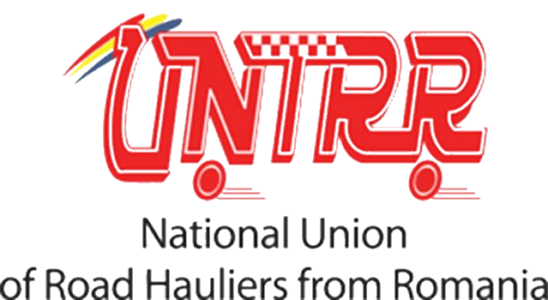
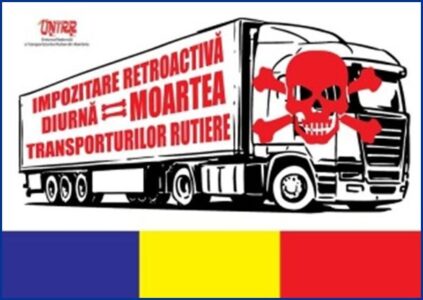 if applied internationally with different values, the new project seems to concern only international activities, while for the national, the concept of the daily allowance remains as it is currently enshrined by law,” say representatives of the UNTRR. . Romania is the only European state to tax the daily allowance, while Eastern European countries such as Poland, Lithuania or Hungary protect their own carriers.The consequences of this measure are devastating, especially as the tax is applied retroactively, as the fines are not imposed by any company can be paid.” The measure is unique in Europe, exempting professional drivers in all countries from the quarantine measure, in order to preserve supply chains, as recommended by the European Commission, which has created and printed a “green color” insisted “with the exception of quarantine of professional drivers.
if applied internationally with different values, the new project seems to concern only international activities, while for the national, the concept of the daily allowance remains as it is currently enshrined by law,” say representatives of the UNTRR. . Romania is the only European state to tax the daily allowance, while Eastern European countries such as Poland, Lithuania or Hungary protect their own carriers.The consequences of this measure are devastating, especially as the tax is applied retroactively, as the fines are not imposed by any company can be paid.” The measure is unique in Europe, exempting professional drivers in all countries from the quarantine measure, in order to preserve supply chains, as recommended by the European Commission, which has created and printed a “green color” insisted “with the exception of quarantine of professional drivers.
Opinion of the DRN
The tax measure has no direct relationship with Mobility Package.
It is important, because the ANAF wants to tax the (tax-free) daily allowance and even wants to impose an assessment for the past 5 years!!
Certainly the latter is of course unheard of and, if indeed implemented, would be the death knell for many transport companies in Romania.
Needless to say, this measure is stupid and short-sighted in other areas as well. A recent survey shows that the average income of Romanian International drivers is currently between €2200/2800 net. That is a hefty fee by Romanian standards and means that the Romanian drivers spend that money in Romania and thus feed domestic consumption well and increase the standard of living in general. Once those fees are taxed, the attractiveness of the Romanians in international road transport will be a lot lower and will largely disappear.
All in all, this action and Mobility Package could change the whole playing field in the EU with only negative consequences such as a huge shortage of drivers, the English know what that means!
European member states criticize Mobility Package
The joint professional representations of transport companies from Romania, Bulgaria, Hungary, Lithuania and Poland already objected in March this year to the decision of the (Romanian) EU Commissioner Adina Valean on the assessment of the effects of the obligation to return the vehicle regularly. to the Member State of residence, which has a major negative impact on transport companies in Central and Eastern Europe, which are confronted with high financial costs. Indirectly, this also applies to Dutch (and other Western European) companies that have branches in Central and Eastern Europe.
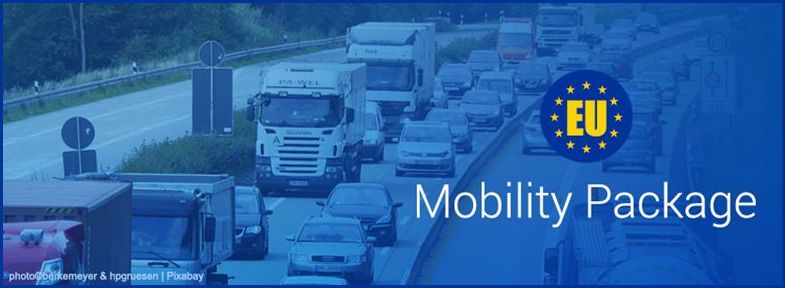
The new obligation has nothing to do with social goals, but represents a step in the market restriction, violating the freedom to provide services and the freedom to do business. In addition, it goes against climate protection efforts such as reducing empty rides.
To consult the registered objection click here.
Because the European Commission declared itself inadmissible, several lawsuits are currently pending before the European Court of Justice. The ruling of the European Court of Justice is expected in the second half of 2022/2023. Until the ruling, the measure of returning trucks must be introduced from February 2022.
During the upcoming Romanian Business Day on 25 November, experts will explain the state of affairs in more detail.
Maritime Sector
Liftal takes over Damen Hoisting
Liftal Hijstechniek takes over Damen Hoisting. The agreement will be effected on 1 October and the organization will be incorporated into the full service specialist in lifting and hoisting technology. For Liftal a strategic expansion in the Rotterdam region, for Damen a choice to stay with its core business.
Damen Hoisting was founded five years ago as a business unit of Damen Anchor & Chain Factory BV.
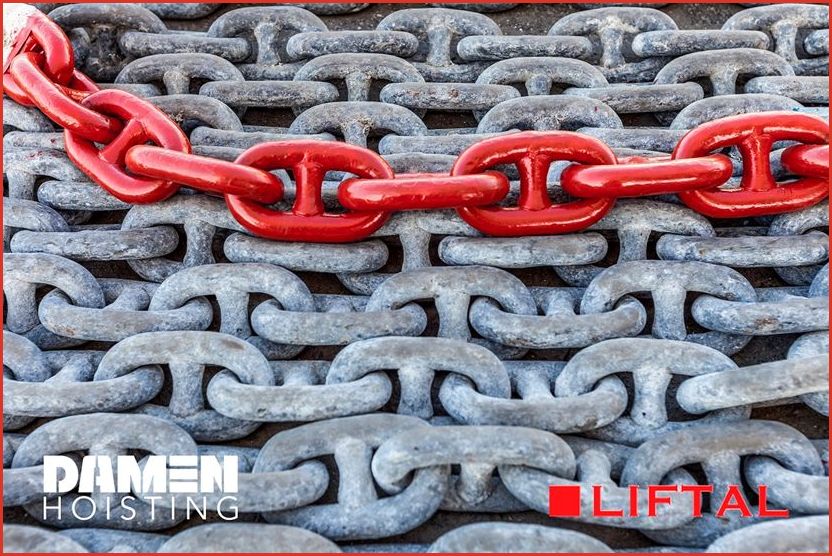
From the accommodation on the Damen Shiprepair Rotterdam site in Schiedam, customers are served from various markets such as the maritime, offshore, industrial and civil engineering industry. Specialist services and activities are carried out in the field of lifting and hoisting under the EKH quality mark. Reasons for the sale include market saturation and Damen’s strategic choice to focus more on its core business.
Liftal Hijstechniek has been active since 1998 in the southwest of the Netherlands and in various European markets in the field of testing and certification of hoisting and lifting equipment for maritime applications, oil/gas/wind energy sectors, industrial markets and the construction sector. From the Belgian branch, the company covers the connecting regions in Belgium such as Antwerp, the Terneuzen-Ghent Canal Zone and Port Areas on the Coast.
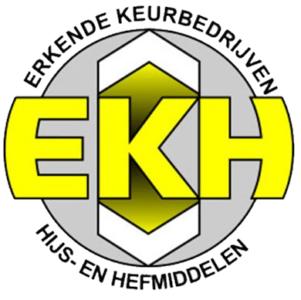 Both managements are happy with the acquisition, Damen Hoisting’s General Manager Perry Rikkers says; “First and foremost, because it guarantees the employment of the seven Damen employees of Hoisting. We have full confidence that with this acquisition our customers will be helped in a good way and that they will continue to receive top service. This is a positive step forward for all involved.”
Both managements are happy with the acquisition, Damen Hoisting’s General Manager Perry Rikkers says; “First and foremost, because it guarantees the employment of the seven Damen employees of Hoisting. We have full confidence that with this acquisition our customers will be helped in a good way and that they will continue to receive top service. This is a positive step forward for all involved.”
Hans Hirdes, Manager of Liftal, adds; “Geographically, the takeover of the activities of Damen Hoisting is a nice addition to Liftal Hijstechniek’s current working area. In addition, given the presence and concentration of shipping, offshore, wind and large industry, the Rotterdam region offers sufficient potential to further expand our activities. Partly in view of the promised support from the Damen Group, we are confident to continue and further expand the activities of Damen Hoisting within Liftal Hijstechniek.”
Work already started from existing agreements and contracts will be completed under Damen Hoisting. Work that has not yet started, but has already been agreed, will be performed by Liftal under the conditions agreed with Damen Hoisting.
Agri & Food sector
Carp caviar salad recognized as an original Romanian product
Traditional carp caviar salad is the tenth Romanian product recognized and protected in the EU The European Commission has approved the registration of the Romanian product “Traditional carp caviar salad” in the register of products recognized as traditional specialty guaranteed (TSG). The traditional specialty guaranteed identifies products with a traditional character in terms of composition or production method, which are unrelated related to a specific geographic area. The name of a product registered as TSG protects it against counterfeiting and misuse. According to the Ministry of Agriculture, the traditional carp caviar salad is a product obtained from salted carp caviar, salted
related to a specific geographic area. The name of a product registered as TSG protects it against counterfeiting and misuse. According to the Ministry of Agriculture, the traditional carp caviar salad is a product obtained from salted carp caviar, salted freshwater fish caviar, sunflower oil, carbonated water, lemon juice. The traditional carp caviar salad is made in two varieties: with or without cooked onions.
freshwater fish caviar, sunflower oil, carbonated water, lemon juice. The traditional carp caviar salad is made in two varieties: with or without cooked onions.
Carp caviar from both wild and aquaculture carp is used to prepare the product “Traditional salad with carp caviar”. They must be mature and maximum fresh. It should not contain skin, scales, or blood clots. The consistency of the eggs should be uniform and the consistency of the granules should be elastic. Romania had previously registered 9 products on European quality systems, of which 8 are Protected Geographical Indications (PGI): Topoloveni plum magician, Sibiu salami, smoked Novac from Ţara Bârsei, smoked Danube mackerel, Pleşcoi sausages, Săveni cheese, Telemea from Sibiu and Salad with pike caviar from Tulcea . To this is added Telemeaua de Ibăneşti, registered on the quality system of the Protected Designation of Origin (DOP).
Is tomato cultivation typical of Romanian horticulture?
At the farm, Romania has the lowest prices in the EU for tomatoes. However, we produce much less than we consume and import from countries where the average price at the farm is more than 40% higher than in our country.
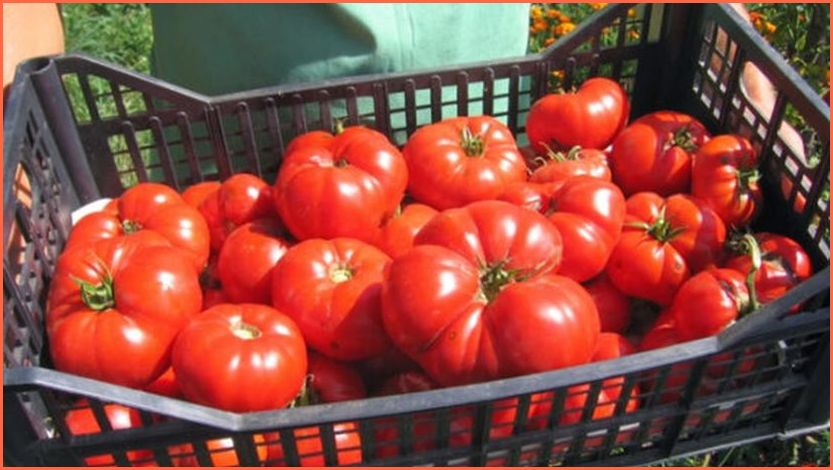
The average price of a kilogram of round, packaged tomatoes at the gates of Romanian farms in August was 0.49 euros, the lowest price in the EU, according to data updated on 1 September by the European Commission. The situation was similar in July, when the average price was slightly lower, at 0.46 euros per kilogram, after a sharp drop compared to the previous month, when farmers sold the kilogram for 0.68 euros. In August last year, the Commission also cut their raw material prices, reaching the lowest prices in the EU, at EUR 0.54 per kilogram.
For comparison: this year Czech farmers are selling an average of a kilo of tomatoes for 1.72 euros per kilo, in France the price is 1.57 euros per kilo, in Hungary 0.76 euros and in Spain 0.7 euros. The average price at EU level is 1.02 euros per kilogram.
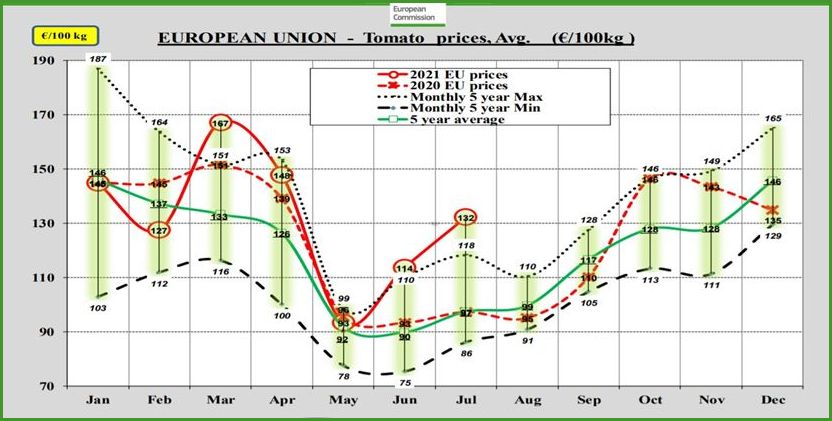
Consumer prices dictated by imports up 16%
However, on the shelves of local stores and in the markets, the goods are also imported. According to local statistics, tomatoes are the product with the lowest degree of self-sufficiency, in 2018 that is 73%, only if we are talking about being eaten fresh. Also in 2019, of a consumption requirement estimated at more than 803,000 tons, only 689.4 thousand tons were produced locally, or 85.8%.
The data for 2020 shows that Romania is the eighth importer of tomatoes in the EU (besides the UK) with a quantity of 90.7 thousand tons worth 112.7 thousand dollars. Compared to 2019, tomato imports were 6% higher in value.
According to the National Institute of Statistics, Romania also imported more than 57.1 thousand tons of grains between January and May 2021, 16% more than in the same period last year. From a value point of view we are talking about 73.5 million euros.
At most, more than 35,600 tons of fresh and chilled tomatoes were supplied from Turkey, a non-EU country for which there is no data on average farm prices. In second place in a ranking of the states where we buy tomatoes is Germany with 7.9 thousand tons, followed by Spain with 4.8 thousand tons. Or, in Spain, the average price at the farm in August was 0.7 euros per kilogram, which is 42% more expensive than in Romania. The value of imports from Spain in the first five months of the year amounted to EUR 8.2 million and from Germany EUR 1.2 million. For Germany there are no data on the average price in August.
What is the European trend
According to the latest analyzes carried out at European level, while EU fresh tomato production has continued to decline since 2016, production of tomatoes for processing, driven by strong demand and low stocks, is expected to grow by 9% in 2021. increase. in total, production is estimated to be 5% higher than in 2020 in the context of a 9% increase in the production of tomatoes for processing and a minus of 2% in the production of fresh tomatoes. Strong demand and low stocks (after strong demand last year) are boosting the production of tomatoes for processing in all major producing countries: Italy (+5%), Spain (+17%) and Poland (+11%). By contrast, the supply of fresh products is expected to decrease by 10% in Spain, the largest EU producer, and in the FR (-2%).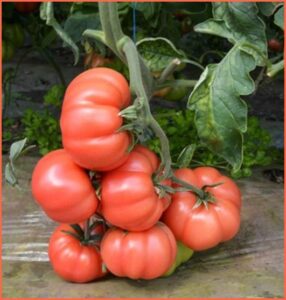
As a result, the import of fresh tomatoes from the EU is expected to increase further in 2021 (+7% / 2020), while exports will decrease (-21%). Morocco remains by far the largest source of imports (70% in 2020). While imports from Turkey (17%) in January-April 2021 were 36% higher than imports from the same period last year, imports from Morocco remained stable.
In terms of exports, they have been declining since 2013 and will fall further in 2021 to a record low of 350,000 tons (-21% / 2020). The sharp decline is driven by a decline in exports to the UK (-37% in January-April 2021 compared to the same period last year), the largest export market in the EU (52%).
“Romanians must seize the popularity of tomatoes to scale up”
The tomato is one of the most loved vegetables in Romania and is still gaining popularity. One grower, who is developing new vegetable varieties tailored to the Romanian consumer, has noticed that the traditional ways of marketing fresh produce are still the most effective in the Romanian market. has grown considerably in Romania over the years. Romania is a country with a large horticultural area.
Euromonitor figures show that vegetable consumption grew by 67.6% between 2014 and 2019, with the tomato category showing the strongest growth from 2018. The tomato is the most consumed vegetable among the Romanian population.
The Netherlands exports tomatoes to Romania, although the figures are sometimes misleading because the Netherlands also exports tomatoes to Turkey (non-EU country), which then exports some of them to Romania.
It is worth a discussion to consider whether it is more interesting for Romania and for the Netherlands to support the former country with their own cultivation. Especially now that a lot of EU funds are flowing to the Romanian agricultural sector in the coming months.
Production of Romanian quality grapes 20% higher than last year
This year’s wine will be exceptional both in terms of quality and quantity, with the production of high quality grapes being more than 20% higher compared to the previous year. Although the spring was quite cold and dry, the weather was favorable for the cultivated varieties, as the grapes are more balanced in terms of acidity and more fruity, a guarantee that the wine resulting from this year’s production will be exceptional. This is in contrast to other European wine-growing countries.
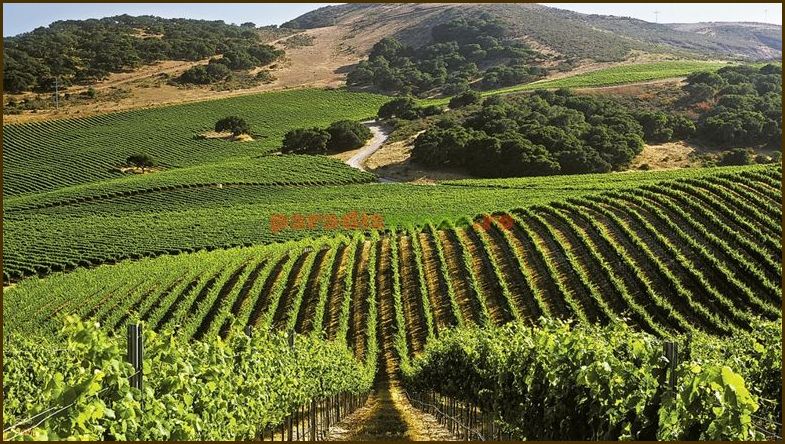
Special interest goes out to the Romanian grape variety Feteasca Neagr or Black Maiden and Black Fairy is the jewel of Romanian indigenous grape varieties with a thousand-year history. Seeds of Feteasca Neagra were discovered in ancient remains from Romania, more than 2000 years old. It is considered one of the best red Romanian wines, with spicy, smoky fruit characters and good tannin structure. The original territory of the grape variety, whose name means “black girl” or in English “black maiden”, was the former principality of Moldova.
To the Romanians, Feteasca Neagra wine is comparable to a refined, difficult to tame, seductive and mysterious fairy, whose presence,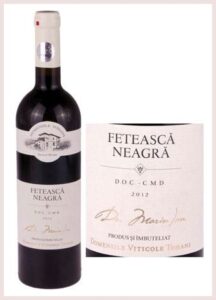 complexity and acidity impresses, all very well balanced as an irresistible woman. The grape is very versatile, they can get 200 to 240 grams of sugar per liter, when harvested late they can get 270 grams. The acidity can be more than 7 g/l in tartaric acid. The maximum potential is reached after the aging in oak barrels followed by the aging in the bottle, resulting in high quality wines with a strong character. Depending on the winemaking techniques, the wines get different flavors and fine tannins, good acidity, medium to full body and often more than 13.5% alcohol.
complexity and acidity impresses, all very well balanced as an irresistible woman. The grape is very versatile, they can get 200 to 240 grams of sugar per liter, when harvested late they can get 270 grams. The acidity can be more than 7 g/l in tartaric acid. The maximum potential is reached after the aging in oak barrels followed by the aging in the bottle, resulting in high quality wines with a strong character. Depending on the winemaking techniques, the wines get different flavors and fine tannins, good acidity, medium to full body and often more than 13.5% alcohol.
It has a typical aroma of prunes, blackberries and black bilberries, along with the flavors of black pepper, vanilla and coffee. The maximum potential is reached after the aging in oak barrels followed by the aging in the bottle, resulting in wines of high quality. quality with a strong characteristic.
It is also possible to obtain special rosé wines. And also the two white varieties, such as the Fetească Regală, are generally dry and fresh with good acidity and a specific, slightly perfumed aroma of sultry tropical fruits such as papaya and fresh citrus. The name literally means ‘Princess grape’. There are also the white wines of the Romanian Fetească Albă grape come in different styles. The dry ones are citrus-fresh with white peach and fresh apricot in the taste.
Opportunities for small Romanian farmers
According to Economica’s calculations, more than 1,000 fruit and vegetable growers participate in one or more programs developed by major food retailers. Depending on the retailer they work with, small manufacturers can receive “turnkey” business or even various equipment and financial support to be able to certify. And the requirements are just right.
Large detail companies have successfully developed programs to attract small producers. The following factors played a role in this:
- Consumer preference for Romanian products
- The pressure of the Romanian state to balance the trade balance
- The media pointing fingers at the massive input generated by the expansion of large commercial networks
- It is logistically easier to sell local goods,

Officially, the “stories” created in Romania that were massively used in marketing and communication strategies began to be written from 2014-2015. It is the period when around this concept were created brands that are used today, such as “My Country”, that of Kaufland or “Romanian Tastes” that of Mega Image. Now most retailers have such private labels under which they sell Romanian fruits and vegetables. More importantly, they have also developed projects in which they invest with farmers, often responsible for educating farmers, identifying products and varieties to grow, technology and sometimes even supporting them in obtaining certifications that demonstrate their quality.According to Economica’s calculations, more than 1,000 fruit and vegetable growers are in one or more programs developed by retailers to get as many local goods as possible on the shelves of their stores.
Investments of more than 1 million euros per year in Mega Image
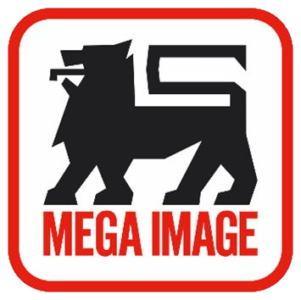 Thus, Mega Image reached its eighth year in which it supports fruit and vegetable growers through the “Romanian Household Flavors” program. Last year, the retailer’s investment in the program was more than EUR 1.3 million and the number of individual producers and cooperatives was 220. More than 50 of these took part in the program this year.
Thus, Mega Image reached its eighth year in which it supports fruit and vegetable growers through the “Romanian Household Flavors” program. Last year, the retailer’s investment in the program was more than EUR 1.3 million and the number of individual producers and cooperatives was 220. More than 50 of these took part in the program this year.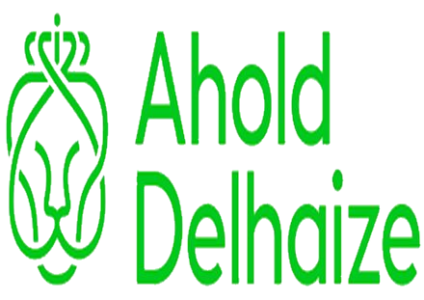
The result: Mega Image says it will stop importing these product categories in the middle of the local vegetable season. This is because in high season more than 400 tons of fruit and vegetables are delivered daily directly from local partner farms to Mega Image warehouses. In the middle of the Romanian tomato season, local growers supply an average of 25 tons per day.
All those who sell under the Gusturi Româneşti brand from Gospodari, grow fruits and vegetables only in the traditional system, directly on the ground, on a total area of more than 140 hectares of solariums and more than 300 hectares of orchards throughout the country.
The collaboration with Mega Image ensures that farmers take over the full amount of vegetables throughout the season, advice from horticultural engineers in the program, a cultivation plan and soil and water analysis or modern techniques such as crop monitoring sensors. In addition, Mega Image supports the costs of seeds, fertilizers, foil and materials needed for the production process. In addition, Mega Image invests in their Global GAP certification, which once again confirms the quality of their products.
Kaufland – 237 farmers
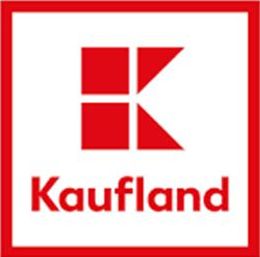 One of the first food retail players to implement such a program with farmers, Kaufland, is this year working with 237 farmers and small producers, registered in the My Country Cooperative. The retailer planned to add 9,000 tons of fruit and vegetables this year, or 30% of the required amount of produce per season, with the rest purchased from other local suppliers. The area contracted in the program is approximately 150 hectares.
One of the first food retail players to implement such a program with farmers, Kaufland, is this year working with 237 farmers and small producers, registered in the My Country Cooperative. The retailer planned to add 9,000 tons of fruit and vegetables this year, or 30% of the required amount of produce per season, with the rest purchased from other local suppliers. The area contracted in the program is approximately 150 hectares.
Unlike Mega Image farmers, those who work with Kaufland must be Global GAP certified or have a certification; have the required quantities of approved fruit and vegetables available, which can be planned in advance; have the capacity to process or package the products, have the capacity to cool or pre-cool the products; have logistics capacity to the central warehouses; have sufficient storage capacity, if necessary.
To participate in the program, you must become a member of the My Country Cooperative. It was founded in 2016 and is owned by five shareholders, each holding 20% of the shares. The cooperative reported net sales of 152.9 million lei in 2020, which is 3.6% more than the year before. The cooperative has 16 employees and a net profit of approximately 2 million lei.
Carrefour – 540 farming families
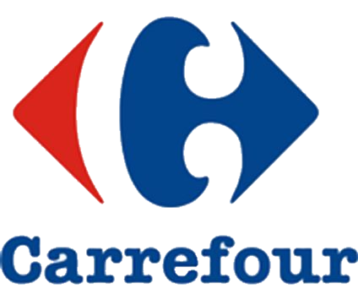 From the perspective of cooperation with farmers, French retailer Carrefour pioneered the circumstances where, in 2017, it officially launched the first agricultural cooperative founded by a retailer – Carrefour Vărăști Agricultural Cooperative. Or, according to the retailer’s latest data captured in its sustainability report, in 2020 the company sold more than 7,425 tons of locally produced fruits and vegetables, by Cooperativa Vărăști, which today includes 140 families and operates 135 hectares of land. At the same time, last year more than 400 farmers signed up for the Grow Romania BIO program, a retailer’s first program for local farmers who want to switch to organic farming. In total, Carrefour currently offers more than 1,000 BIO products.
From the perspective of cooperation with farmers, French retailer Carrefour pioneered the circumstances where, in 2017, it officially launched the first agricultural cooperative founded by a retailer – Carrefour Vărăști Agricultural Cooperative. Or, according to the retailer’s latest data captured in its sustainability report, in 2020 the company sold more than 7,425 tons of locally produced fruits and vegetables, by Cooperativa Vărăști, which today includes 140 families and operates 135 hectares of land. At the same time, last year more than 400 farmers signed up for the Grow Romania BIO program, a retailer’s first program for local farmers who want to switch to organic farming. In total, Carrefour currently offers more than 1,000 BIO products.
Lidl – more than 92,000 tons of fruit and vegetables from local farmers
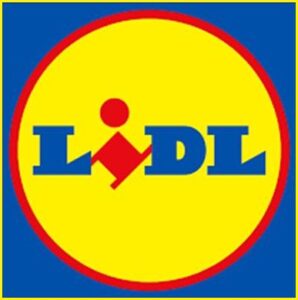 Since September 1, 2017, the condition of the Global GAP certification for fruit and vegetable suppliers has been with Lidl, which advises all its fruit and vegetable suppliers, regardless of whether they are part of their “Cultivated in Romania, specifically Romanian” project. This project started in 2016 with the University of Agronomic Sciences and Veterinary Medicine Bucharest and aims to revive local varieties, such as Roșia de Buzău 1600, while supporting farmers through audit and advisory services.
Since September 1, 2017, the condition of the Global GAP certification for fruit and vegetable suppliers has been with Lidl, which advises all its fruit and vegetable suppliers, regardless of whether they are part of their “Cultivated in Romania, specifically Romanian” project. This project started in 2016 with the University of Agronomic Sciences and Veterinary Medicine Bucharest and aims to revive local varieties, such as Roșia de Buzău 1600, while supporting farmers through audit and advisory services.
“We have increased the supply of fruits and vegetables from cooperatives and groups of local producers, all of which are Global GAP checked. For example, the amount of Romanian fruits and vegetables purchased during the reporting period (March 2019 – February 2020) increased by 18.37% compared to with the previous period, which reached 92,057 tons and exceeded the amount of fruit and vegetables purchased from third-party suppliers,” according to Lidl’s latest sustainability report.
According to the company, in 2019, at the peak of the season, 70% of the fruits and vegetables on the Lidl market were purchased from Romanian suppliers (selling from domestic production or import no.). The percentage of Romanian fruits and vegetables was 81%. In total, Lidl worked together with 290 suppliers in Romania for the fixed range (not only fruit and vegetables) in 2019.
Profi – 90 local producers
 And the retailer Profi, operated by the investment fund Mid Europa Partners, wants to support 200 farmers over the next two years to produce under its own brand “Fresh from us”. They already have 90 partners in the program launched in 2019 to increase the quantities of Romanian fruits and vegetables on the shelves. Farmers in the Profi program produce based on accurate information about the required quantities and the varieties they need to grow. It also benefits from guidance and assistance from Profi horticultural engineers who make recommendations on plant care, as well as continuously examining production parameters, including laboratory tests that certify whether crops meet regulatory standards regarding the concentration of nitrates, nitrites and pesticides.
And the retailer Profi, operated by the investment fund Mid Europa Partners, wants to support 200 farmers over the next two years to produce under its own brand “Fresh from us”. They already have 90 partners in the program launched in 2019 to increase the quantities of Romanian fruits and vegetables on the shelves. Farmers in the Profi program produce based on accurate information about the required quantities and the varieties they need to grow. It also benefits from guidance and assistance from Profi horticultural engineers who make recommendations on plant care, as well as continuously examining production parameters, including laboratory tests that certify whether crops meet regulatory standards regarding the concentration of nitrates, nitrites and pesticides.
Romania imports nearly 35% of domestic honey consumption
Romania imports between 3,000 and 6,000 tons of honey each year, or nearly 30-35% of its domestic consumption, although it is one of the main honey producers in Europe, says Romanian Beekeepers Association (ACA) president Ioan Fetea. bee has become a species more dependent on the political factor than on nature”. 
It is also important how much is consumed. If today we have not reached 800-900 grams of honey per year (per capita), in the countries of the European Union, in Switzerland, it is consumed more than two kilograms and more. this is the most important indicator: the honey consumption per capita. Europe is both the largest importer and the largest consumer of honey, importing almost half of its consumption,” said Ioan Fetea, present at the National Honey Fair. Unfortunately, Romania exports more bulk honey than packaged honey, although it is of very good quality, and a lot of counterfeit honey is entering the country, says Fetea It is incomprehensible how Romania fails to protect at least this sector, but all agricultural sectors have this problem, and not only in Romania I suspect that this globalization will affect us anyway also and as much as have pushed into this trading stance. It’s a shame,” said the ACA chief. Last but not least, he indicated that this species has become more dependent on the political factor than on nature, as the state financially supports this sector.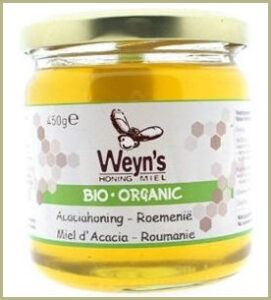
“We are grateful to the Agriculture Minister because he struggled to get financial support, somewhere around 5 euros per bee family, money we spent on food, treatments and now we get some of it back because they might not even be 10% yield. However, the de minimis aid of 52 million lei announced by the Minister of Agriculture for this sector is being distributed among a flock of 2.1 million bee families, although the association’s estimates are at most 1.9 million. Romania can only cover as a honey base for a flock of 2.3, less than 2.5 million bee families.  Romania produced an average of 22,000 tons of honey annually, ranked fourth in Europe, and the peak recorded a few years ago was 1.47 million bee families. Nationally, approximately 40,000 beekeepers are registered, of which more than 60% are ACA members, with a population of 900,000 bee families. According to statistical data, Romanians consume 70 grams of sugar and only 3 grams of honey every day. Although honey consumption has increased by 15% in recent years, to 550 grams per capita per year, under these conditions Romania is still at the bottom of the ranking, at the European level. Statistical data shows that Romanians consume 3-4 times less honey compared to the two kilograms consumed in Germany or 1.5 kilograms in the Netherlands and Belgium.
Romania produced an average of 22,000 tons of honey annually, ranked fourth in Europe, and the peak recorded a few years ago was 1.47 million bee families. Nationally, approximately 40,000 beekeepers are registered, of which more than 60% are ACA members, with a population of 900,000 bee families. According to statistical data, Romanians consume 70 grams of sugar and only 3 grams of honey every day. Although honey consumption has increased by 15% in recent years, to 550 grams per capita per year, under these conditions Romania is still at the bottom of the ranking, at the European level. Statistical data shows that Romanians consume 3-4 times less honey compared to the two kilograms consumed in Germany or 1.5 kilograms in the Netherlands and Belgium.
Known is the Romanian medicinal bee product that is obtained and bears the name Propolis and it is made by bees from nectar of the white blossoms of the Acacia tree and also its honey has a clear (almost white) color.
Financial sector
ING Bank Romania – Gross profit up 19% to 441 million lei in first half
ING Bank Romania posted a gross profit of 441 million lei in the first half, an increase of 19% compared to the same period in 2020, and a total turnover of 1.1 billion lei, an increase of 6%, the bank recently reported. known. In the first half of the year, the bank had collected 46.1 billion lei (+ 13%) in deposits and 30.4 billion lei (+ 9%). Provisioned costs amounted to 134 million lei (-33%).
“We started the year positively, and that was noticeable throughout the first semester. We are seeing increased confidence from all categories of customers in the economic recovery, with many of them resuming plans that had been postponed due to the pandemic. In this positive context, both our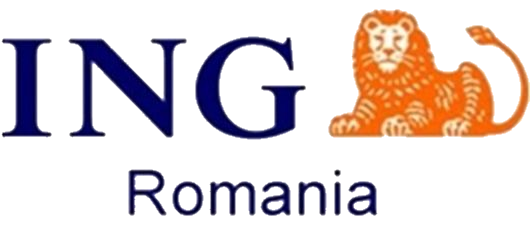 loan portfolio as our revenue increased, while provisions decreased significantly, leading to a profit increase of almost 20 percent. It should be noted that the customers’ continued interest in the SME Invest program, the value of the loans approved this year reached the level of the entire year 2020 in just two and a half months,” emphasized Mihaela Bîtu, CEO of ING Bank Romania .
loan portfolio as our revenue increased, while provisions decreased significantly, leading to a profit increase of almost 20 percent. It should be noted that the customers’ continued interest in the SME Invest program, the value of the loans approved this year reached the level of the entire year 2020 in just two and a half months,” emphasized Mihaela Bîtu, CEO of ING Bank Romania .
According to the bank, contactless payments continue to rise steadily, a trend accelerated by the context of the COVID-19 pandemic. “Today, almost one in four POS payments are made with an ING card. And online commerce continues to grow. The number of card transactions has increased by 20% compared to the first half of 2020, while the value of payments in online commerce has increased by 25%.ING recently introduced the possibility to view the details of the cards directly from the mobile application on the merchants’ payment authorization pages, for a more pleasant and faster shopping experience”, the communiqué stated. At the same time, ING continued its digital strategy and launched a new product, all the more relevant in the context of the Covid-19 pandemic : the provision of ING Health Protect, which covers the risk of surgery as a result of an accident or illness, and which can be completed 100% digitally.
“The production of new mortgages increased by 21% in the first half of the year against the background of the growing interest from Romanians for more spacious living spaces or closer to a green environment. This interest has translated into an increase of almost 50% in the applications received for the New House program,” said the bank’s representatives.
According to the quoted source, ING’s Business Banking division announced in mid-April that it will continue to offer financing under the umbrella of the SME Invest program in 2021. For example, ING received more than 4,000 applications in June, compared to 7,500 in 2020. registered. The value of the loans approved in the two and a half months of the program’s operation this year is comparable to that in the whole of 2020. ING Bank has requested that the ceiling be topped up in order to continue to offer this financing option until the end of the year.
With regard to the process of digitizing tools for entrepreneurs, ING continued the process of migrating existing customers in the application for the business segment, where 48% of logins took place on mobile devices.
In the large corporate segment, the second quarter also brought new green loans into the bank’s portfolio. After brokering the first green bond issuance of NEPI Rockcastle last year, in April 2021, the Wholesale Banking division of ING Bank Romania transformed the standard loan issued to the group into a “green” loan worth 100 million euros.
According to the bank, the standard loan, originally contracted in 2017 by NEPI – the largest owner of shopping centers in Central and Eastern Europe, has gone “green” by adding environmental, social and governance components. The funding has reconsolidated the two companies’ commitment to fostering the transition to a green economy.
“This fits in with the context in which ING recently announced it would join the Net-Zero banking alliance, with the aim of reducing greenhouse gas emissions and reaching zero net emissions by 2050. Guided by Terra’s proprietary innovative methodology, ING continues its strategy to identify green finance opportunities and support clients’ sustainable goals through dedicated financial solutions, knowledge and expertise,” the statement reads.
ING Bank Romania is part of ING Group, a global international financial institution, providing banking services to more than 38.8 million individual customers, companies or institutions in more than 40 countries. ING Bank Romania is a universal bank with more than 1.6 million customers from three business segments: retail (retail), SMEs and Wholesale Banking.
IFC: Record private sector investment in Romania in the context of the pandemic
 The International Finance Corporation (IFC), the investment arm of the World Bank, invested a record $430 million in the private sector in Romania in the fiscal year ended June 30, primarily to support businesses and accelerate economic recovery. . “Despite the economic challenges caused by the pandemic, IFC has increased its support to Romanian companies, with a record investment of $429 million in fiscal year 2021 (between July 2020 and June 2021),” the international financial institution said. IFC’s investments have focused on increasing financial inclusion, addressing the financing needs of small and medium-sized enterprises (SMEs), promoting green initiatives to combat climate change, strengthening capital markets and increasing the resilience of system banks.
The International Finance Corporation (IFC), the investment arm of the World Bank, invested a record $430 million in the private sector in Romania in the fiscal year ended June 30, primarily to support businesses and accelerate economic recovery. . “Despite the economic challenges caused by the pandemic, IFC has increased its support to Romanian companies, with a record investment of $429 million in fiscal year 2021 (between July 2020 and June 2021),” the international financial institution said. IFC’s investments have focused on increasing financial inclusion, addressing the financing needs of small and medium-sized enterprises (SMEs), promoting green initiatives to combat climate change, strengthening capital markets and increasing the resilience of system banks.
IFC recently subscribed to bonds issued by Raiffeisen Bank Romania and Banca Comercială Română (BCR) worth 474 million lei (more than $110 million), which is IFC’s first investment in bonds expected to meet the minimum capital requirements and EU eligible debt (MREL) . Earlier, IFC announced that it had provided a loan of 72 million euros to Palas Campus, led by Iulian Dascălu, for the construction of an office complex according to ecological standards.
Retail Sector
One in 6 EU stores of Ahold Delhaize Group are located in Romania
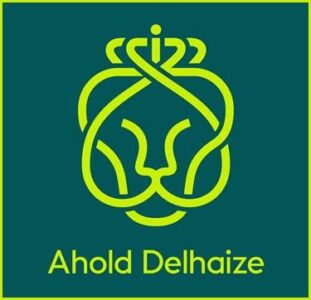
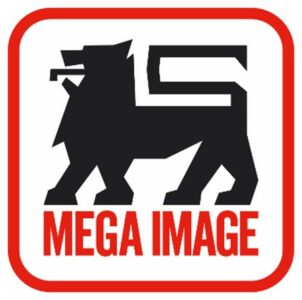 In terms of store number, the Romanian market is one of the 3 most important Europeans for the Dutch-Belgian group, along with the Netherlands and Belgium. The Dutch-Belgian group Ahold Delhaize, owner of the Mega Image store network, has some 5,200 stores in Europe under various brands and formats. Of these, 880 are in Romania, or one in six stores, according to ZF’s calculations based on data from the group’s quarterly report and its own website. In addition to European markets, the group is also present in the US and Indonesia. In Europe, the Romanian market is one of the 3 most important for the group in terms of number of stores. In Romania, the company owns Mega Image supermarkets and Shop&Go proximity stores in the offline segment. These brands are only used domestically. Mega Image is a Romanian brand, founded by the founder of the network, the Malideros, acquired over 20 years ago by the Dutch-Belgian group. Mega Image achieved sales of RON 7.2 billion in 2020, an increase of almost 9% compared to 2019. It announced that it would continue to expand on the offline segment at the same pace as in 2020.
In terms of store number, the Romanian market is one of the 3 most important Europeans for the Dutch-Belgian group, along with the Netherlands and Belgium. The Dutch-Belgian group Ahold Delhaize, owner of the Mega Image store network, has some 5,200 stores in Europe under various brands and formats. Of these, 880 are in Romania, or one in six stores, according to ZF’s calculations based on data from the group’s quarterly report and its own website. In addition to European markets, the group is also present in the US and Indonesia. In Europe, the Romanian market is one of the 3 most important for the group in terms of number of stores. In Romania, the company owns Mega Image supermarkets and Shop&Go proximity stores in the offline segment. These brands are only used domestically. Mega Image is a Romanian brand, founded by the founder of the network, the Malideros, acquired over 20 years ago by the Dutch-Belgian group. Mega Image achieved sales of RON 7.2 billion in 2020, an increase of almost 9% compared to 2019. It announced that it would continue to expand on the offline segment at the same pace as in 2020.
Energy Sector
Experts expect Romania to become the largest gas producer in the EU
Neptune Deep. The clock is ticking in the possible transaction between Romgaz and Exxon. The main domestic gas producer, the majority of which in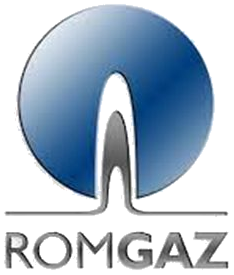 owned by the Romanian state, Romgaz, has less than three weeks to complete the transaction to acquire the ExxonMobil group member company that owns 50% of the Neptun Deep project, a transaction that could unlock offshore potential from Romania,
owned by the Romanian state, Romgaz, has less than three weeks to complete the transaction to acquire the ExxonMobil group member company that owns 50% of the Neptun Deep project, a transaction that could unlock offshore potential from Romania,
In June, Romgaz signed an agreement with US oil giant ExxonMobil granting it an exclusive right for 4 months to negotiate the full acquisition of ExxonMobil’s Romanian subsidiary, which owns 50% of the rights to the concession of the offshore natural gas perimeter Deep Neptune in the Black Sea .![]()
Recently, President Klaus Iohannis expressed his support for the partnership between OMV Petrom (company owning 50% of the project) and Romgaz in the offshore project Neptun Deep, essential for both providing safe energy and achieving the goals of the energy transition.
“The conclusion of the negotiations between the US company ExxonMobil and the National Company Romgaz creates encouraging conditions for the involvement of the national producer as an active partner in the exploitation of natural gas in the Black Sea and for the straight-line project,” said the presidential administration. Under the agreement, the exclusive right that Romgaz has obtained from the American giant will expire on October 15. According to Petroleum Economist, the closing of the transaction would be the decisive element to change the offshore law, which “slowed the development of the offshore sector in the state of Southeastern Europe. The consultancy Rystad Energy, quoted by Petroleum Economist, claims that the main shareholder of Romgaz, the Romanian government, was the main proponent of the acquisition of offshore gas reserves from the  state, in order to reduce dependence on Russian gas imports. Rystad Energy also states that ExxonMobil is expected to be interested in closing the transaction, as it will allow the US giant to withdraw from Romania without waiting for the offshore law amendment.
state, in order to reduce dependence on Russian gas imports. Rystad Energy also states that ExxonMobil is expected to be interested in closing the transaction, as it will allow the US giant to withdraw from Romania without waiting for the offshore law amendment.
According to the consultancy, Exxon is in a delicate situation with authorities in Bucharest first waiting for the transaction to be initialed in order to change the offshore law. “Offshore players expect Romania to become the largest gas producer in the EU by the end of this decade,” said Eva Mlada, vice president of Rystad. The consultancy estimates that if Romgaz buys Exxon’s stake in the project, a definitive Zo claims by 2023 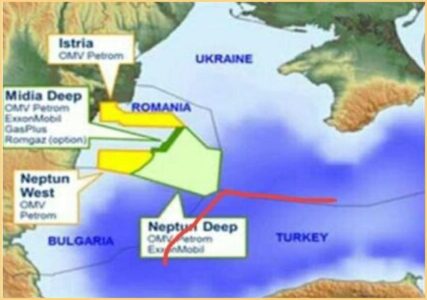 Ryastad, assuming production of 8.7 billion cubic meters in 2020, according to a statistical report
Ryastad, assuming production of 8.7 billion cubic meters in 2020, according to a statistical report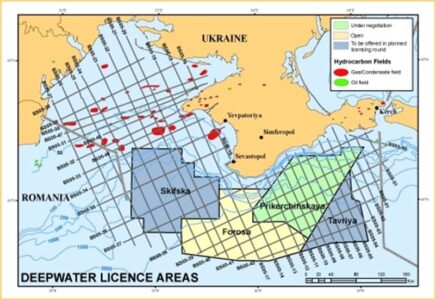 of BR, that Romania will reach a level of 14-15 billion cubic meters per year in the period 2027-2029 due to the start of production in Neptun Deep and other offshore perimeters. If domestic consumption remains between 10 and 12 billion cubic meters per year, Romania could become independent from Russian gas and export as much as 20-25% of its domestic production. In addition, regional competition will increase. Following recent discoveries in the Black Sea, Romania and Turkey, foreign companies are also interested in Ukraine’s territorial area, said Swapnil Babele, senior analyst at Rystad. Last year, the Ukrainian government granted Naftogaz, a Ukrainian state-owned company, exclusive exploration rights in the area. Naftogaz signed a memorandum with the Austrians of OMV in February 2021, Petroleum Economist indicates. However, the memorandum was signed with the Romanian company OMV Petrom, in which the Austrians are the main shareholders. A memorandum similar to Naphtha Israel Petroleum will be signed next month. Earlier this year, Ukraine granted Naftogaz a permit to conduct a geological survey in the perimeter of Skifska – near Neptune Deep and the perimeter of Sakariya in Turkish territorial waters. Neftogaz estimates that its perimeters in the Black Sea contain reserves of about 200 billion cubic meters of gas, Swapnil Babele said.
of BR, that Romania will reach a level of 14-15 billion cubic meters per year in the period 2027-2029 due to the start of production in Neptun Deep and other offshore perimeters. If domestic consumption remains between 10 and 12 billion cubic meters per year, Romania could become independent from Russian gas and export as much as 20-25% of its domestic production. In addition, regional competition will increase. Following recent discoveries in the Black Sea, Romania and Turkey, foreign companies are also interested in Ukraine’s territorial area, said Swapnil Babele, senior analyst at Rystad. Last year, the Ukrainian government granted Naftogaz, a Ukrainian state-owned company, exclusive exploration rights in the area. Naftogaz signed a memorandum with the Austrians of OMV in February 2021, Petroleum Economist indicates. However, the memorandum was signed with the Romanian company OMV Petrom, in which the Austrians are the main shareholders. A memorandum similar to Naphtha Israel Petroleum will be signed next month. Earlier this year, Ukraine granted Naftogaz a permit to conduct a geological survey in the perimeter of Skifska – near Neptune Deep and the perimeter of Sakariya in Turkish territorial waters. Neftogaz estimates that its perimeters in the Black Sea contain reserves of about 200 billion cubic meters of gas, Swapnil Babele said.
Economical developments
The top of the best European countries where you can start a business
develop
For freelancers or entrepreneurs looking to start a business, it is best to invest in the UK. The creation of a legal entity only takes five days, and for the ease with which they do business, the state was awarded a score of 84 points out of 100. Romania is in tenth place because it is a good place for companies in terms of low start-up costs and the fact that there is a small difference between the financial potential of men and women.
Romania is the 10th country in the EU, with 73 out of 100 points, in a ranking of European countries according to the difficulty of creating a new business, according to a survey conducted by Tide, the leading provider of digital banking services for UK businesses and freelancers.
However, Romania stands out positively from the perspective of the small difference between women’s and men’s wage incomes (we are second only to Luxembourg). This is an indicator of the country’s values, attitudes and priorities.
Romania ranks fifth in the cost of setting up a business, after Slovenia and the UK (where the process is free), Ireland and Denmark.
According to the unemployment rate, Romania is in 8th place, and depending on the time it takes to open a business, in 10th place, with 20 days. Healthy economies tend to have low unemployment rates. Working in a healthy and growing economy can make it easier for you to sell your products and services. Theoretically, however, low unemployment rates could reach a point where recruitment can become difficult or expensive.
Where it’s easiest to do business
The UK has been named the best European country to start a business in, according to Tide, because of its large economy, low unemployment rate, and the ease with which you can start and run a business. The UK also has the lowest cost of starting a business at zero, comparable to Slovenia.
Ireland is another top competitor, combining its strong economy with reasonable tax rates and the ease of starting and running a business. The state is closely followed by the Netherlands, in third place, due to a combination of high market capitalization, ease of setting up a business and very low unemployment.
The biggest surprise at the top of our ranking is Estonia , which finished in fifth place after achieving very good results in many different categories, including ease of doing business. Estonia is the first place to offer e-residence, which means that anyone can establish their headquarters and finances in this country, which could cause an influx of new businesses in this country.
Luxembourg has the smallest gender pay gap of any country analyzed in the survey, and Germany is the leader in the GDP category, meaning it has a larger and more active economy.
Last but not least, the Czech Republic has the lowest unemployment rate
The Tide Summit was created after analyzing national performance indicators for 28 European countries, including GDP, unemployment rate and practicalities of setting up a business.
Top 10 best European countries where you can develop a business
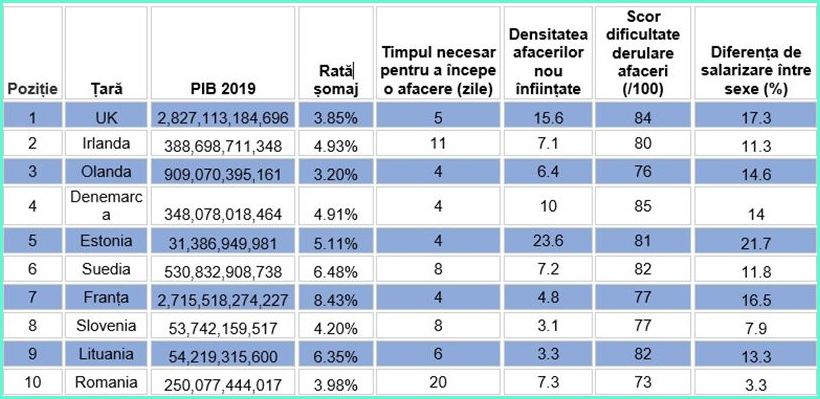
Source: Tide
Things to consider before opening a business
According to Tide, barriers to trade manifest themselves in a variety of ways, including high tax rates, expensive startup costs and slow startups.
Other factors to consider at the outset include unemployment rates, the saturation of new businesses in terms of activity, the ease of doing business, and the level of equal pay for women and men. These are all values that can indicate the health of an economy, the prospects for your business and the cultural values and norms in which you will operate.
Henri Coandă Airport in the top 10 most visited airports
For World Tourism Day, Uber is supporting the gradual return of business and commuting as international travel restrictions ease.
As restrictions become easier and the number of travel bookings increases, airport applications in Romania alone have grown almost 19 times in the past 4 months! that is the best result in the entire CEE region. As a result, Henri Coandă Airport has been unveiled in the top 10 most visited airports, according to 2021 Uber travel data in Europe, the Middle East and Africa.
- London Heathrow, UK
- Paris Charles de Gaulle, France
- Paris Orly, France
- Lisbon, Portugal
- Madrid, Spain
- Cairo, Egypt
- Jeddah, Saudi Arabia
- Amsterdam, The Netherlands
- Warsaw, Poland
- Bucharest, Romania
Coinciding with World Tourism Day, internal data showed Thursday is the busiest day for airport travel of the year. When it comes to the most requested times, we see more drop-offs at 5am than at any other time of the day when the customer is heading to the airport for a vacation or business trip.
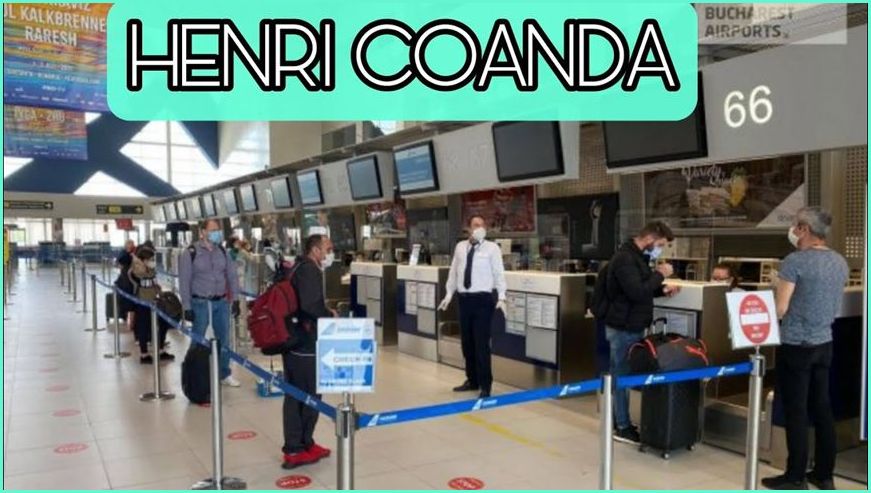
While 1pm has been revealed as the busiest for people returning home.
But it’s not just airport travel that has seen an increase, as business travel in Bucharest has increased significantly: since the beginning of the year, passengers made + 10.33% of journeys through our solution Uber for Business. Commuters are trading working from home for going to the office and commuting, physical business meetings and professional lunches are definitely back in our lives.
Public health sector
Romania hit hard by the 4th Covid wave
We are ranked 2nd in Europe and 6th in the world in deaths in the past 24 hours. Romania is ranked 6th in the world and 2nd in Europe for recorded deaths in recent days, made CNCAV ) known. The recorded deaths of patients with the novel coronavirus in Romania represent 5% of all reported cases in the world. According to CNCAV, more than 10,000 people have been hospitalized in Romania, of which nearly 300 are minors, and more than 1,000 people are in the ATI hospitalized and fighting for their lives with doctors, Digi 24 writes.
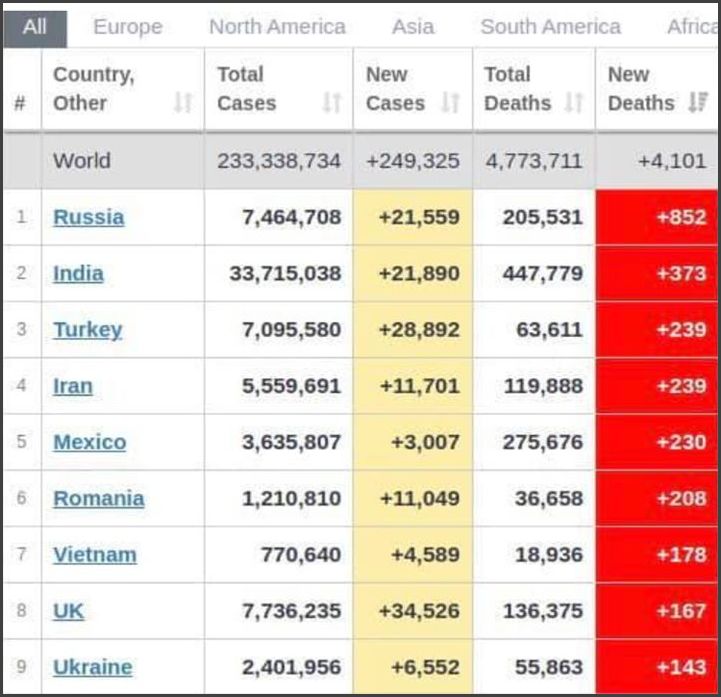
“Of the total number of deaths recently reported in Europe, the deaths in Romania represent 11.5%”, the CNCAV representatives reported. In Romania there were 2.2 times more new cases than the European average and 6 times more cases than the world average According to them, Romania reported 2.65 times more deaths on Tuesday than the European average and 6.34 times more than the world average.In terms of vaccination coverage, relative to the entire population, this is 52% in Europe with the full schedule and another 4.5% with the first dose, and in the world the percentages reach 33 and 12, respectively. At the same time, in Romania the vaccination rate is 28% with the full schedule and another 1% with the first dose.” Let’s help each other! Let’s get vaccinated en masse with a complete schedule! Let’s not block hospitals! Let’s take good care of ourselves and the people around us! Vaccination remains the most appropriate protection solution against COVID-19,” CNCAV representatives also said.
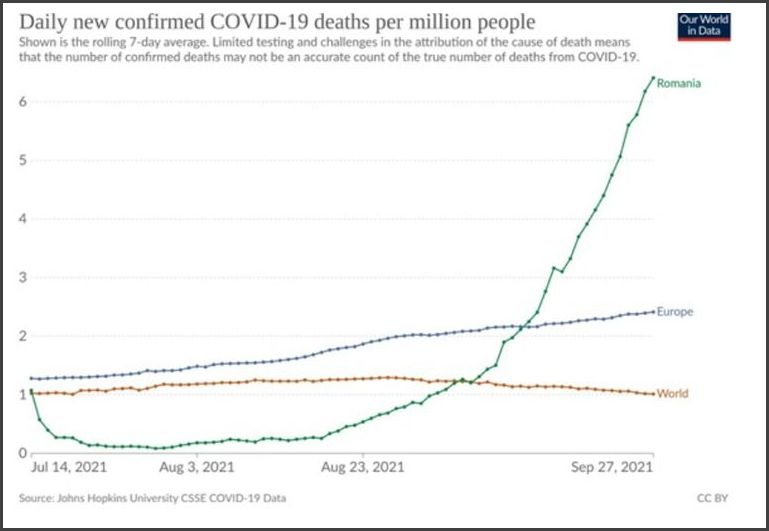
List of countries with epidemiological risk – updated. Romania has entered the red zone
The National Emergency Situations Committee on Thursday updated the list of countries/areas with a high epidemiological risk for which the quarantine measure is required for persons arriving from them in Romania, in the red zone covering the Republic of Moldova, Armenia, Bulgaria, Belarus and Greenland.
According to the decision of the CNSU, Romania, the Republic of Moldova, Armenia, Bulgaria, Belarus and Greenland have entered the red zone due to the high incidence of SARS-CoV-2 diseases.
Austria, Switzerland, Gibraltar, Iran, the Maldives and the Bahamas entered the yellow zone because of the decrease in incidence, and Ukraine, the Faroe Islands and Leshoto from the green zone, after the increase in speed.
The Netherlands, Germany, France, San Marino, Liechtenstein, Vietnam, Puerto Rico, Sri Lanka, Honduras, Kosovo and Cape Verde have entered the green zone according to the CNSU decision.
The list will come into effect from October 3rd at midnight.
At the same time, the National Emergency Situations Committee has decided to grant an exemption from the quarantine measure for drivers of trucks, as well as persons carrying out passenger transport, if the negative result of an RT-PCR test for SARS-CoV-2 infection performed no later than 72 hours before entering the country, in the conditions of travel for professional purposes.
“Drivers of vehicles with a maximum authorized capacity of more than 2.4 tons for the transport of goods, as well as drivers of vehicles with more than 9 seats, including the driver’s seat for the transport of people, are exempt from the quarantine measure. (…) If presents the negative result of an RT-PCR test for SARS-CoV-2 infection, performed at most 72 hours before entering the country, and the trip is made for professional purposes only”, is displayed in the CNSU decision .
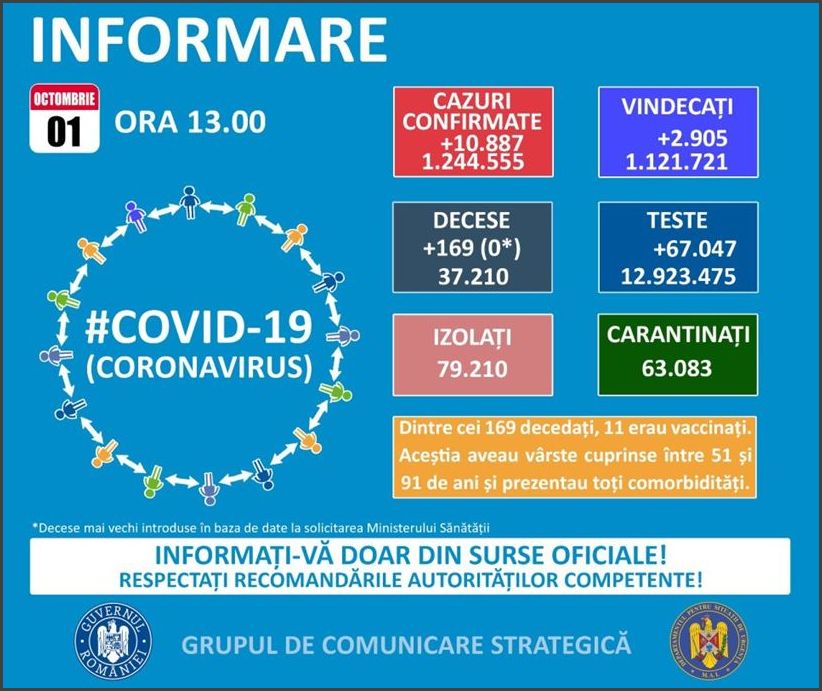
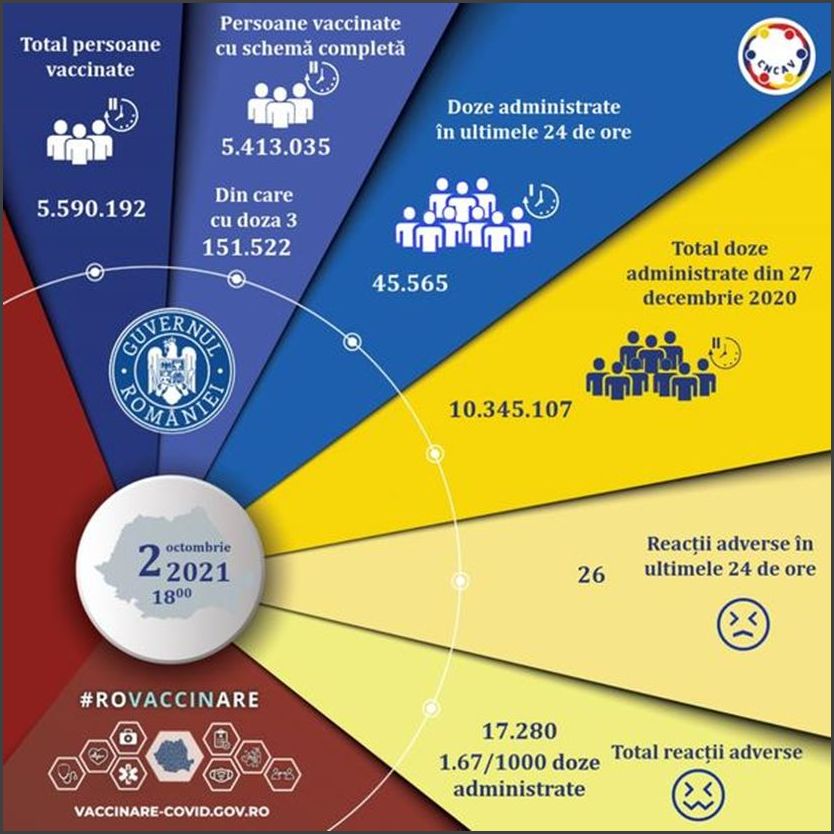
Antibodies offered by Covid Pfizer vaccine disappear after 7 months in many immunized people
Six months after receiving the second dose of the Pfizer Covid vaccine, many people who have been immunized no longer have antibodies induced by this serum that can immediately neutralize the coronavirus variants of concern, Reuters reports.
The researchers looked at blood samples from 46 healthy adults, mostly young or middle-aged, after receiving the two doses and again six months after the second dose.
“Our study shows that vaccination with the Pfizer-BioNtech vaccine induces high levels of neutralizing antibodies to the original variant, but the levels drop almost 10 times in seven months,” Bali Pulentran of Stanford University and Mehul Suthar of Emory University said in a statement. an e-mail.
In about half of all subjects, neutralizing antibodies that can block infection against coronavirus variants such as Delta, Beta and Miu were undetectable six months after the second dose, their team reported Thursday on bioRxiv, before peer review. the immune system against the virus.
However, they “are extremely important in protecting against SARS-CoV-2 infection,” Pulentran and Suthar said. These findings suggest that the administration of a booster dose approximately 6 to 7 months after the first immunization is likely to increase protection against SARS-CoV-2 and its variants.
Disclaimer

The newsletter of the Dutch Romanian Network is compiled with great care. The Dutch Romanian Network cannot accept any liability for a possible inaccuracy and/or incompleteness of the information provided herein, nor can any rights be derived from the content of the newsletter. The articles do not necessarily reflect the opinion of the board.
